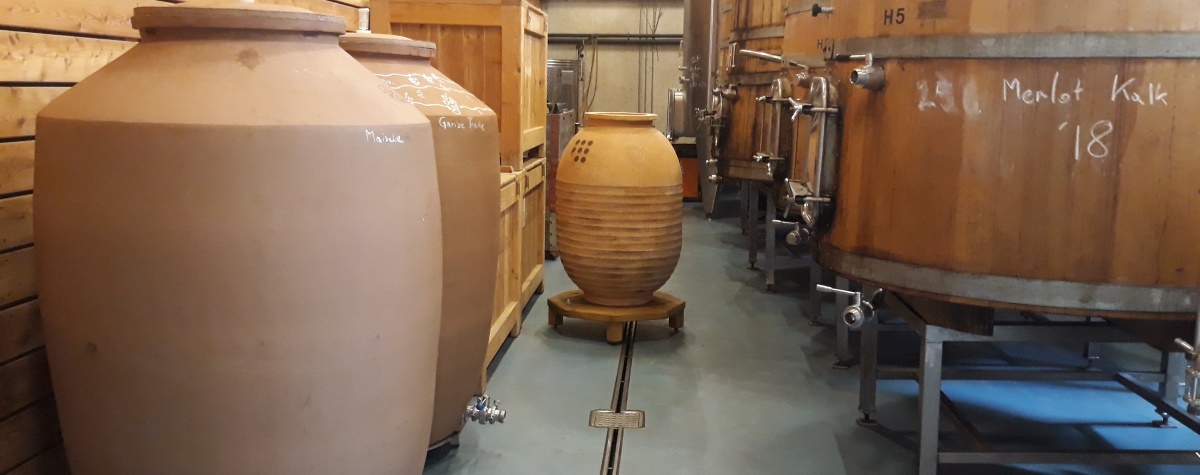Phase 1
Prior to the Industrial Revolution, agriculture was – at least in the broad sense – organic. It may have lacked the integrated systems thinking of modern organic agriculture but there was little in the way of pesticides (with the exception of sulphur and copper in viticulture) and nothing synthetic.During this phase wines were produced in a similarly low-intervention way.

Phase 2
The advent of conventional modern agriculture commenced with the Industrial Revolution and really kicked off with the rapid development and adoption of synthetic fertilisers and pesticides in the 1940s. During this phase the improvement of yields and quality (as it was then understood) of produce was extreme. There were few dissenters during this phase but the extreme conversion did spark the development of alternative thinking, such as biodynamics and organics.The equivalent phase for wine – the rapid development of winemaking technology – really occurred in the 1980s and 1990s. This is when a wide range of additions came to be used in the wine industry. As with agriculture, there were few dissenters during this phase as these developments led to improvements in quality (as it is still understood) and reduced problems, including fermentation time, stuck ferments, and development of wine faults.
'Over time science started to catch up with itself in relation to the potential negative effects of conventional agriculture'
Phase 3
The re-emergence of organic agriculture. Over time science started to catch up with itself in relation to the potential negative effects of conventional agriculture, ie. DDT, pesticide residues. This generated more of a groundswell for the organic movement, ie. better science led in part to the validation of organics.Is natural wine at phase three? Is there enough motivation to make a radical change back to low intervention? Is the movement supported by science?
Phase 4
The difficult rebirth of organics. Organics gathers pace, much is made of selling organic products but quality assurance is a problem – the market is not used to this altered perception of quality, ie. an apple with a blemish and the lack of audited standards results in some producers abusing the system.The natural wine movement is somewhere between phases 2 and 4.
Phase 5
Organics gets its act together. More research is conducted, ie. into organics itself but also, importantly, into what is not working well with old-school conventional farming. Audited quality assurance schemes are implemented providing greater assurance to consumers but also discipline within the movement itself.Phase 6
This is when organics goes mainstream.Where are we now with natural wine?
At present there is no agreed standard for natural wine. And where are the peer reviewed studies on natural wine? Various aspects of what is generally considered to be natural winemaking practice – such as organic and biodynamic viticulture, low/no sulphur, low/no filtration – have been studied but in isolation.Some relevant research papers
Here is an Italian study comparing organic red wines without sulphur dioxide to conventional wines with sulphite additions:Food Chemistry:2015:179 p336-342:Garaguso I 2015:Polyphenols content, phenolics profile and antioxidant activity of organic red wines produced without sulfur dioxide/sulfites addition in comparison to conventional red wines
Key findings: Polyphenols and flavonoids were slightly higher in the organic wine but the difference was not statistically significant.
Here are two more Italian studies on sulphur reduction which would potentially meet organic requirements but not necessarily natural wine movement requirements. The first is on the control of Brettanomyces bruxellensis (‘Brett’) inoculum on grapes in the absence of sulphur dioxide…
Innovative Food Science and Emerging Technologies:2018:Online March 2018:Cravero F 2018:Control of Brettanomyces bruxellensis on wine grapes by post-harvest treatments with electrolyzed water, ozonated water and gaseous ozone
Key findings: Electrolyzed water, aqueous ozone and gaseous ozone were all effective in reducing B. bruxellensis on grapes. Gaseous ozone was particularly effective.
The other is a further study on electrolyzed water leading to the promotion of inoculated yeast over natural yeast populations:
Innovative Food Science and Emerging Technologies:2016:35 p21-28:Cravero F 2016:Post-harvest control of wine-grape mycobiota using electrolyzed water
Key findings: Electrolyzed water reduced yeast populations on grapes, reduced the time required for Saccharomyces cerevisiae to dominate, reduced acetic acid in wine by approximately 55% and increased esters by approximately 50%, leading to a positive influence on wine aroma.
The intention of this article is not to talk down natural wine. These early dissenters to modern winemaking are thankfully pushing many producers to look critically at what they are doing, just as the founders of the biodynamic and organic movements did with agricultural practices. There is great potential, for example, in exploring indigenous yeast and bacteria, as these three studies show:
- AJEV:2012:63-3 p432A:Carrau F 2012:Increased Complexity and Chardonnay Quality in Spontaneous Fermentation and Cofermentation with Hanseniaspora vineae (ASEV 63rd National Conference Abstract)
- XI International Terroir Congress:2016:10-14 July 2016:Siren K 2016:Spontaneous fermentation dynamics of indigenous yeast populations and their effect on the sensory properties of Riesling
- International Journal of Food Properties:2018:Online July 2018:Duan W 2018:Volatile composition and aromatic attributes of wine made with Vitis vinifera L.cv Cabernet Sauvignon grapes in the Xinjiang region of China - effect of different commercial yeasts
One final point: If the aim of the natural wine movement is to make natural winemaking mainstream, then more needs to be done in terms of research and quality assurance.
James Wright is an international viticulture and management consultant and author of www.vitisynth.com and the newsletter VitiSynthesis.













.png)






